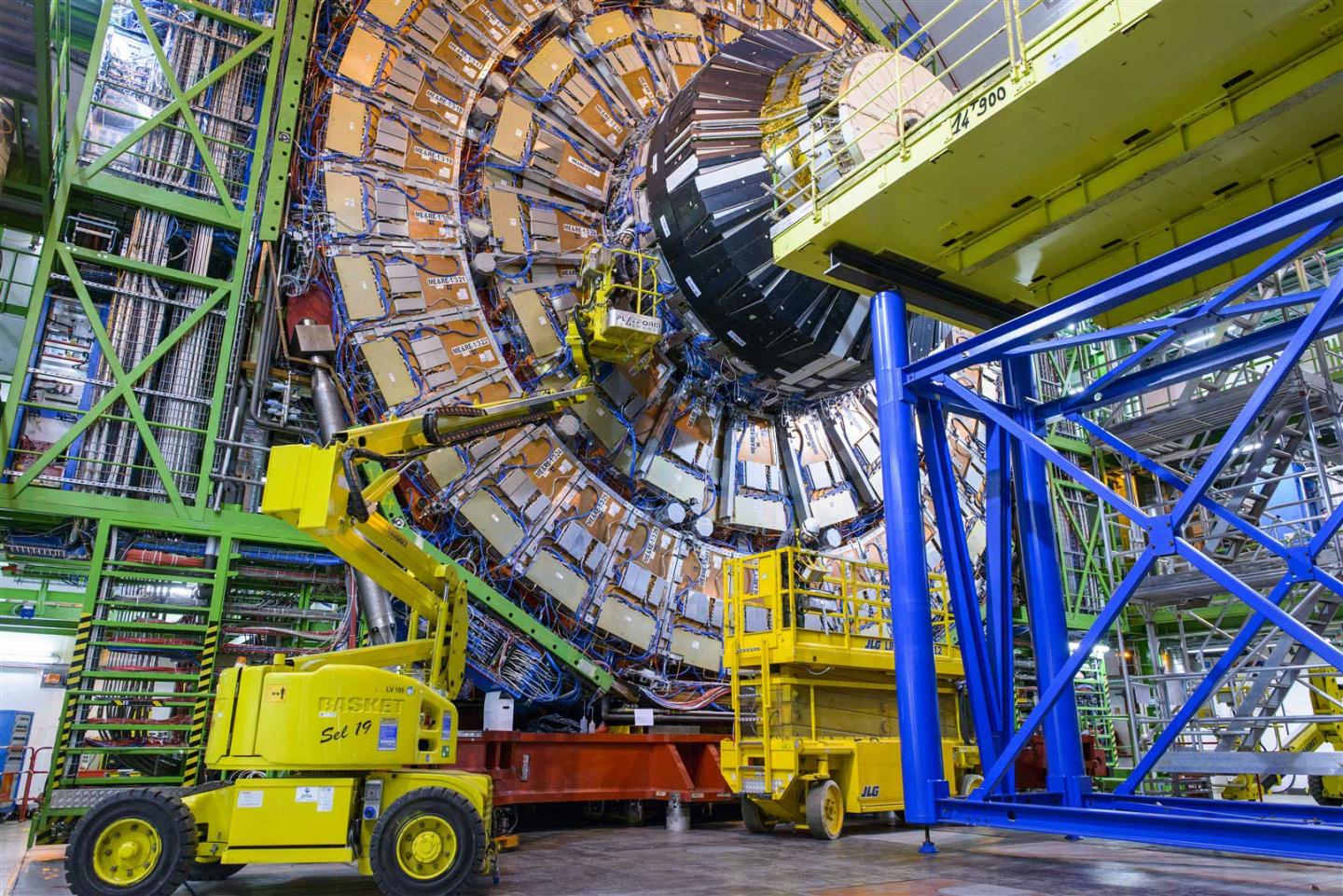Physicists at the Large Hadron Collider (LHC) may have created the most minuscule drop of liquid ever formed in a laboratory.
Last year physicists collided protons with heavier lead ions in the LHC. They found a small but noticeable correspondence between the trajectories of charged particles that sped away from collisions. Newly produced particles appeared to be synced, like a school of fish moving in unison. They dubbed this phenomenon the “ridge effect.”
The CMS experiment studied more proton–lead collisions early this year, and the result, made public this week, suggests that the particles are behaving the way they do in lead–lead collisions, where they are swept along by a drop of plasma. If this is true, the drop formed in proton–lead collisions would be the smallest drop of liquid ever formed in a laboratory.

